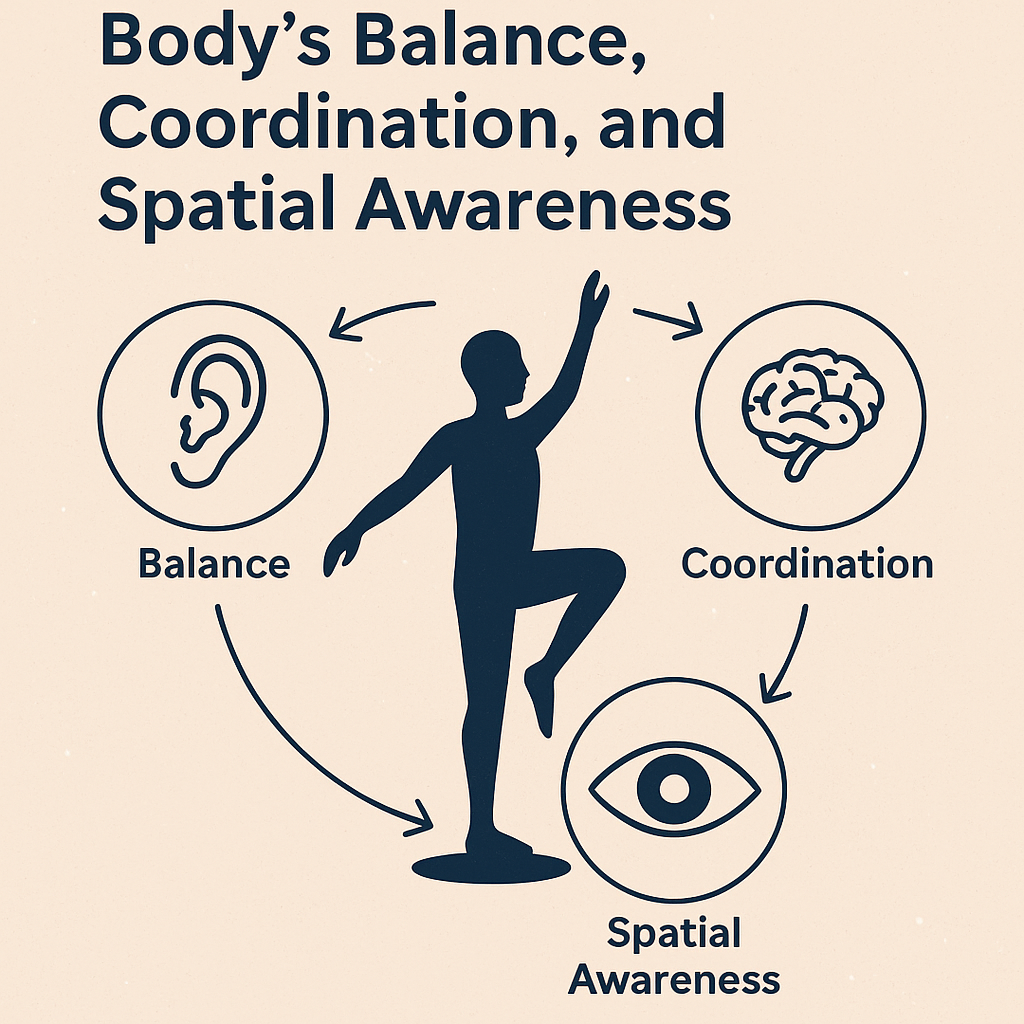
Body Balance, coordination, and spatial awareness are fundamental components of physical health and peak human performance. They form the basis of all motor skills and determine how effectively the body interacts with its environment. Whether we are walking, dancing, lifting, or simply reaching for a glass of water, these elements of physical control are constantly engaged. A decline in any of these areas can severely impact daily life, increasing the risk of injury and reducing mobility. This comprehensive guide explores how to strengthen balance, refine coordination, and sharpen spatial awareness through science-backed methods and practical strategies.
Understanding the Core Components of Physical Stability
What Is Body Balance?
Body balance is the ability to maintain the body’s center of gravity over its base of support, whether in static positions or dynamic movements. It is controlled by a complex interaction between the vestibular system, proprioception, visual input, and muscular strength. Balance becomes particularly crucial as we age, with declines contributing to falls and fractures.
Coordination: Synchronized Neuromuscular Control
Coordination refers to the harmonious interaction between different body parts to perform movements smoothly and efficiently. It involves both gross motor coordination (large movements like running) and fine motor coordination (small movements like writing). Poor coordination often results from neurological issues, muscle weakness, or lack of motor training.
Spatial Awareness: Mastery of Body in Space
Spatial awareness is the brain’s ability to recognize the position of the body in relation to the objects around it. This cognitive function is essential for reaction time, agility, and safe navigation in complex environments. It’s closely linked to proprioception—our internal GPS that informs us of limb position without visual confirmation.
Key Systems Involved in Balance, Coordination, and Awareness
- Vestibular System: Located in the inner ear, it detects head movement and orientation.
- Proprioceptive System: Sensory receptors in muscles and joints send signals to the brain about body position.
- Visual System: Eyes provide essential environmental context for maintaining posture and navigation.
- Central Nervous System: Processes all incoming data and translates it into appropriate motor responses.
Top Evidence-Based Exercises for Improving Balance and Coordination
1. Proprioceptive Training
Incorporate unstable surfaces like balance boards, Bosu balls, or foam pads during strength exercises. These tools stimulate the body’s proprioceptors and improve joint stability.
Example Routine:
- Single-leg stands on Bosu ball (3 sets of 30 seconds)
- Lateral leg lifts on foam pad
- Eyes-closed balance drills
2. Cross-Body Movements
Cross-lateral exercises force the brain to coordinate across hemispheres, enhancing both neuromuscular efficiency and cognitive processing.
Try These:
- Cross-crawl marching
- Windmill toe touches
- Bear crawls with opposite limb movements
3. Tai Chi and Controlled Movements
Slow, mindful movement like Tai Chi, Pilates, and yoga improves body awareness and reactive balance. These disciplines train postural alignment, core engagement, and motor planning.
Neurological Drills to Boost Spatial Awareness
- Mirror Drills: Mimic another person’s movement in a mirror to train response accuracy.
- Object Avoidance Drills: Move quickly through obstacle courses without visual pre-mapping.
- Mental Rotation Exercises: Practice visualizing objects in 3D to enhance brain-body mapping.
Dietary and Lifestyle Support for Neuromuscular Health
- Omega-3 Fatty Acids: Boost neuronal communication and brain plasticity.
- Vitamin B12 and D: Essential for nerve function and proprioceptive feedback.
- Hydration: Dehydration impairs cognitive function and muscle responsiveness.
- Adequate Sleep: Sleep enhances neural consolidation, improving reaction time and motor skill retention.
Common Impairments and How to Overcome Them
| Impairment | Description | Solution |
|---|---|---|
| Vertigo or Dizziness | Often vestibular-related | Vestibular rehab exercises, ENT consultation |
| Joint Instability | Weak proprioceptive feedback | Resistance and balance training |
| Clumsiness or Poor Reaction Time | Coordination deficits | Cross-body and plyometric drills |
Tools and Technology to Support Progress
- Balance Training Apps (e.g., Bobo Balance, Sway Medical)
- Wearable Motion Sensors to measure gait and posture
- Virtual Reality Rehab Games that sharpen reflexes and awareness in dynamic environments
Conclusion: Building a Balanced, Coordinated, and Spatially Aware Body
Achieving optimal body balance, coordination, and spatial awareness is not reserved for athletes—it’s essential for everyone. With targeted physical training, neurological stimulation, and lifestyle adjustments, we can significantly enhance these foundational elements of human function. The result is a body that moves with grace, reacts with precision, and operates with confidence in any environment.
Let us not wait until imbalance leads to injury. By prioritizing these often-overlooked aspects of physical fitness, we unlock better performance, longevity, and daily independence.
OTHER ARTICLES: